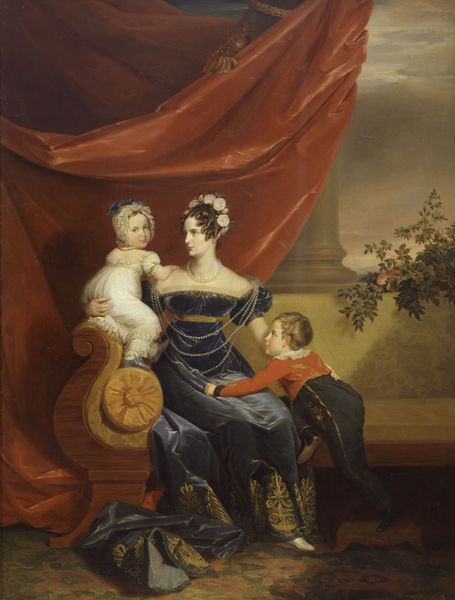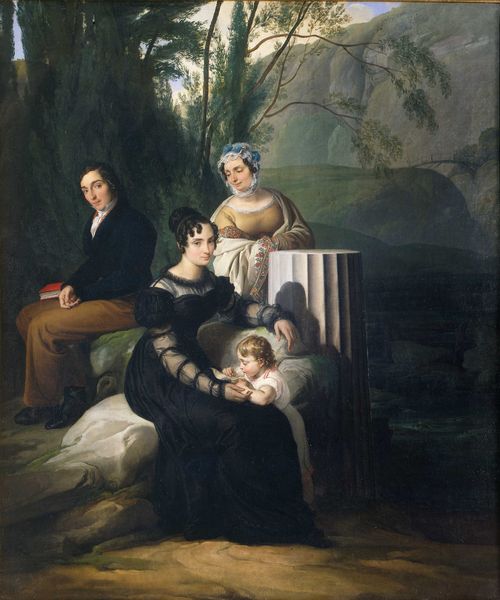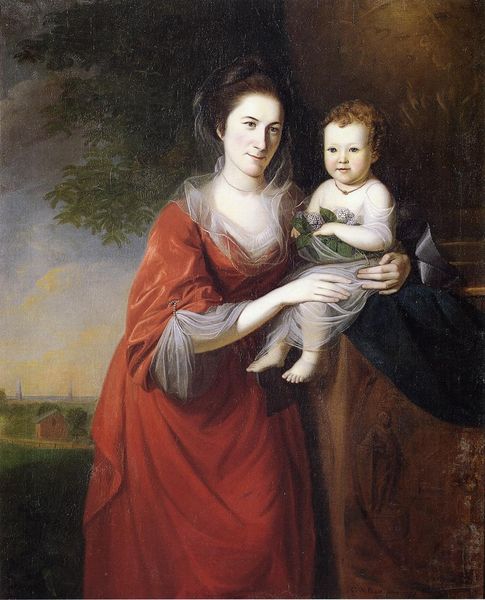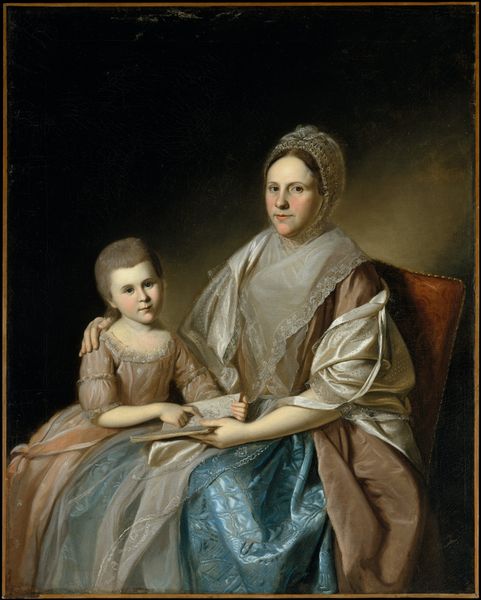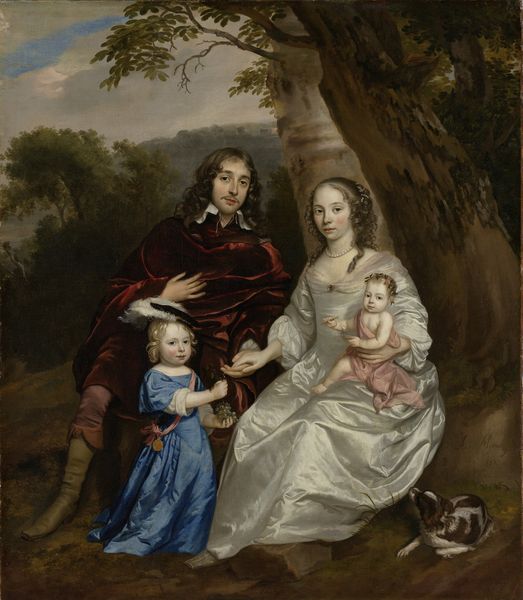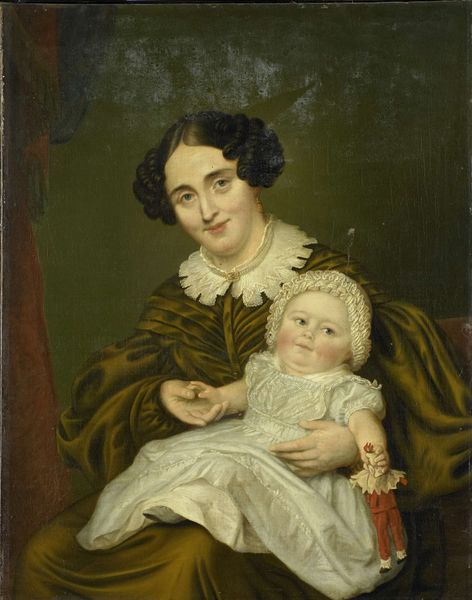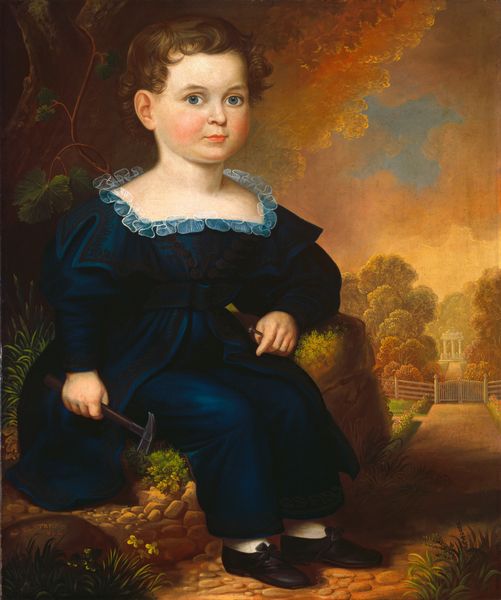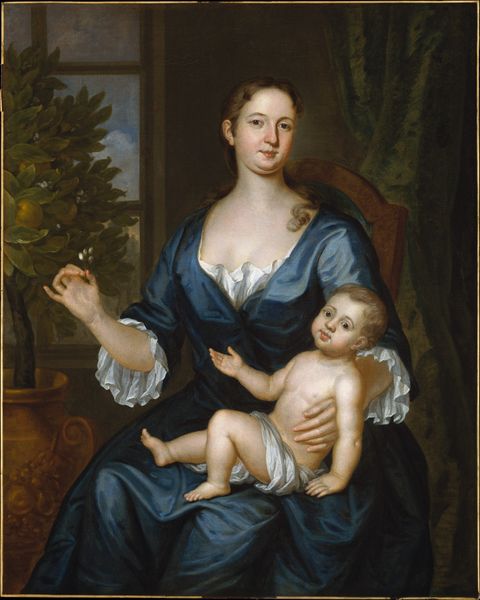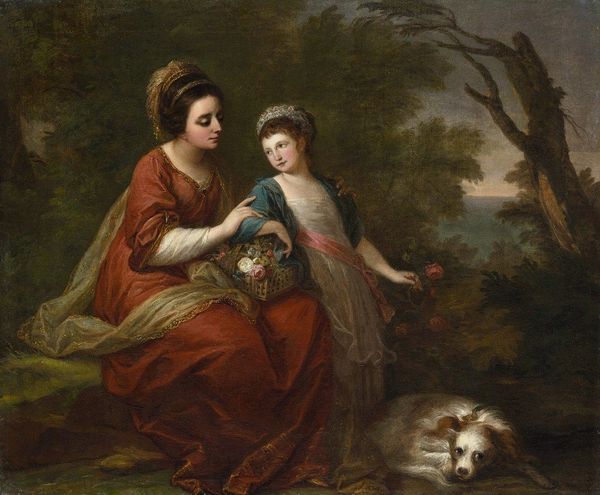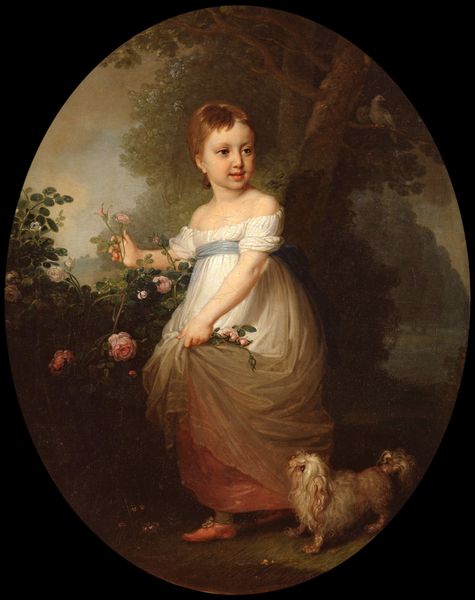
painting, oil-paint
#
portrait
#
painting
#
oil-paint
#
landscape
#
figuration
#
oil painting
#
child
#
group-portraits
#
romanticism
#
genre-painting
Dimensions: 36 3/8 x 29 3/16 in. (90.2 x 72.4 cm)
Copyright: Public Domain
Curator: We are standing before George W. Twibill Jr.’s oil-on-canvas work "Portrait of a Lady and Child," painted in 1833 and now part of the Metropolitan Museum of Art's collection. Editor: The first thing that strikes me is its sombre tonality, despite the idyllic setting. The lady's stark black dress and the muted landscape hues create a sense of formality, even constraint. Curator: Absolutely. Black was very fashionable in portraits then, symbolizing status but also recalling mourning customs; portraits served as keepsakes. Note how the light subtly models the child's face, contrasting with the flattening effect of the mother's dress. This speaks to ideas around legacy and lineage in visual culture. Editor: Yes, the formal composition underscores a clear social hierarchy. The lady's seated centrally and the child somewhat off to the side, an arrangement reinforcing her position. There is a contrast in surface quality too; see the visible brushstrokes in the background trees which fade to smoother, finer detailing for the faces and drapery. Curator: The Romanticist landscape—complete with its own visual language, trees indicating safe domestic space—offers clues to the emotional landscape here, too. And the slight positioning of the mother is designed to remind us of a Virgin and Child pairing. We see echoes of a protective symbolism. Editor: Yet, there’s a rigidity that counters a naturalistic reading. Note the deliberate positioning and controlled pose and spacing; everything is rigidly formal in pictorial design which is enhanced further in post-production techniques such as using software plugins. It brings to the forefront questions about social roles. Curator: Indeed. This portrait then becomes more than a mere representation, reflecting societal values, gender, and identity, and, possibly, repressed emotions visualized through inherited symbols. Editor: Well, by analyzing color, composition, and pictorial space, we can appreciate the artist’s effort to express complex emotions in the language of painting itself. The image stays long in my memory after this brief look.
Comments
No comments
Be the first to comment and join the conversation on the ultimate creative platform.
